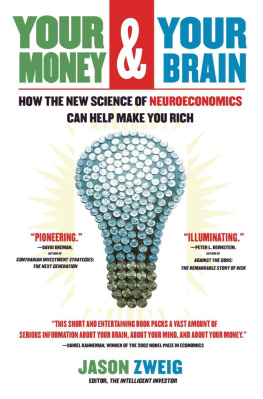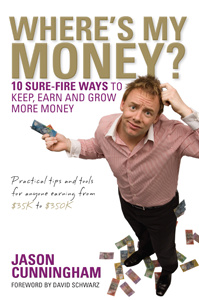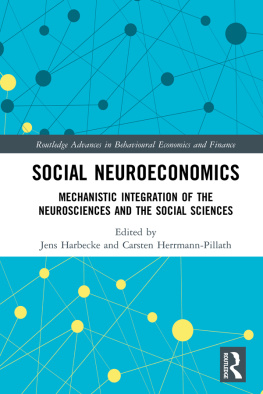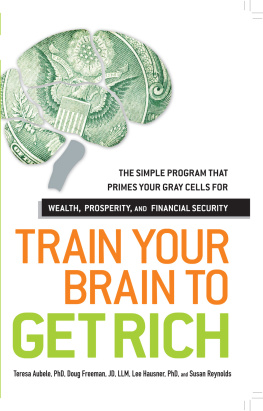Jason Zweig - Your Money and Your Brain: How the New Science of Neuroeconomics Can Help Make You Rich
Here you can read online Jason Zweig - Your Money and Your Brain: How the New Science of Neuroeconomics Can Help Make You Rich full text of the book (entire story) in english for free. Download pdf and epub, get meaning, cover and reviews about this ebook. year: 2007, publisher: Simon & Schuster, genre: Business. Description of the work, (preface) as well as reviews are available. Best literature library LitArk.com created for fans of good reading and offers a wide selection of genres:
Romance novel
Science fiction
Adventure
Detective
Science
History
Home and family
Prose
Art
Politics
Computer
Non-fiction
Religion
Business
Children
Humor
Choose a favorite category and find really read worthwhile books. Enjoy immersion in the world of imagination, feel the emotions of the characters or learn something new for yourself, make an fascinating discovery.
- Book:Your Money and Your Brain: How the New Science of Neuroeconomics Can Help Make You Rich
- Author:
- Publisher:Simon & Schuster
- Genre:
- Year:2007
- Rating:3 / 5
- Favourites:Add to favourites
- Your mark:
- 60
- 1
- 2
- 3
- 4
- 5
Your Money and Your Brain: How the New Science of Neuroeconomics Can Help Make You Rich: summary, description and annotation
We offer to read an annotation, description, summary or preface (depends on what the author of the book "Your Money and Your Brain: How the New Science of Neuroeconomics Can Help Make You Rich" wrote himself). If you haven't found the necessary information about the book — write in the comments, we will try to find it.
Your Money and Your Brain: How the New Science of Neuroeconomics Can Help Make You Rich — read online for free the complete book (whole text) full work
Below is the text of the book, divided by pages. System saving the place of the last page read, allows you to conveniently read the book "Your Money and Your Brain: How the New Science of Neuroeconomics Can Help Make You Rich" online for free, without having to search again every time where you left off. Put a bookmark, and you can go to the page where you finished reading at any time.
Font size:
Interval:
Bookmark:
Your Money and Your Brain
How the New Science of Neuroeconomics Can Help Make You Rich
Jason Zweig
Simon & Schuster
New York London Toronto Sydney

 SIMON & SCHUSTERRockefeller Center1230 Avenue of the AmericasNew York, NY 10020Copyright 2007 by Jason ZweigAll rights reserved, including the right of reproduction in whole or in part in any form.SIMON & SCHUSTER and colophon are registered trademarks of Simon & Schuster, Inc.Zweig, Jason.Your money and your brain: how the new science of neuroeconomics can help make you rich / Jason Zweig.p. cm.Includes bibliographic references.1. InvestmentsPsychological aspects. 2. FinanceDecision making. 3. Neuroeconomics.HG4515.15.Z84 2007332.601'9dc22 2006100986ISBN-13: 978-1-4165-3979-7ISBN-10: 1-4165-3979-4Visit us on the World Wide Web:http://www.SimonSays.com
SIMON & SCHUSTERRockefeller Center1230 Avenue of the AmericasNew York, NY 10020Copyright 2007 by Jason ZweigAll rights reserved, including the right of reproduction in whole or in part in any form.SIMON & SCHUSTER and colophon are registered trademarks of Simon & Schuster, Inc.Zweig, Jason.Your money and your brain: how the new science of neuroeconomics can help make you rich / Jason Zweig.p. cm.Includes bibliographic references.1. InvestmentsPsychological aspects. 2. FinanceDecision making. 3. Neuroeconomics.HG4515.15.Z84 2007332.601'9dc22 2006100986ISBN-13: 978-1-4165-3979-7ISBN-10: 1-4165-3979-4Visit us on the World Wide Web:http://www.SimonSays.com For my wife, who did the real work with love and grace
Contents
Chapter One
Neuroeconomics
Chapter Two
"Thinking" and "Feeling"
Chapter Three
Greed
Chapter Four
Prediction
Chapter Five
Confidence
Chapter Six
Risk
Chapter Seven
Fear
Chapter Eight
Surprise
Chapter Nine
Regret
Chapter Ten
Happiness



CHAPTER ONE
Neuroeconomics
Ambrose Bierce

Font size:
Interval:
Bookmark:
Similar books «Your Money and Your Brain: How the New Science of Neuroeconomics Can Help Make You Rich»
Look at similar books to Your Money and Your Brain: How the New Science of Neuroeconomics Can Help Make You Rich. We have selected literature similar in name and meaning in the hope of providing readers with more options to find new, interesting, not yet read works.
Discussion, reviews of the book Your Money and Your Brain: How the New Science of Neuroeconomics Can Help Make You Rich and just readers' own opinions. Leave your comments, write what you think about the work, its meaning or the main characters. Specify what exactly you liked and what you didn't like, and why you think so.







